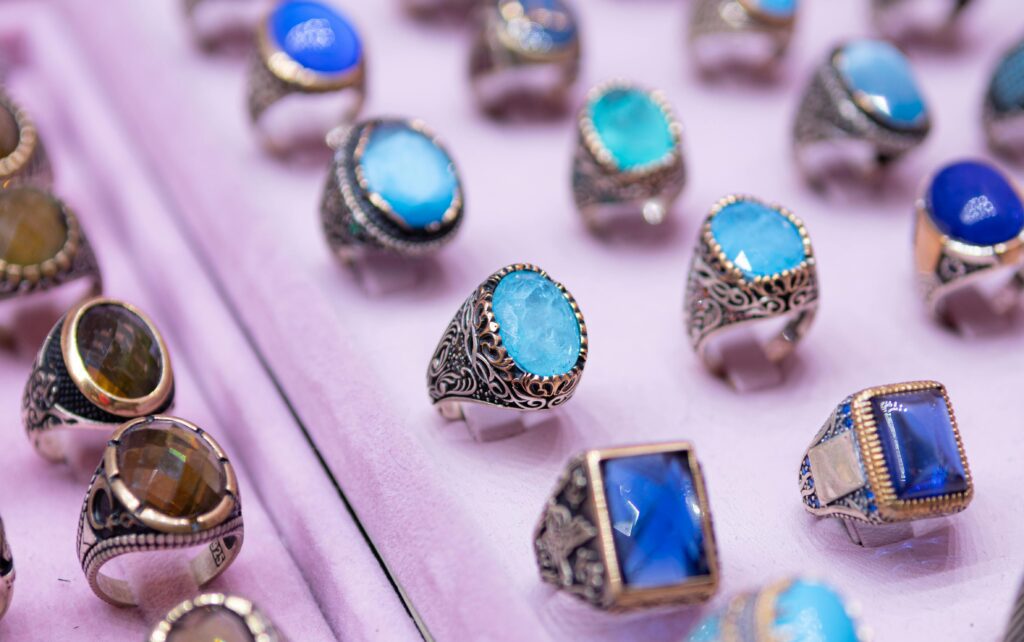Introduction
Sapphire is one of the most revered and sought-after gemstones in the world. Its stunning blue hue, coupled with its durability and rarity, has made it a favorite among jewelers and collectors. This article explores the fascinating world of sapphires, delving into their history, properties, types, and significance in various cultures. We will also discuss how to care for sapphire jewelry and its role in the modern market.
The History of Sapphire
Ancient Origins
Sapphires have been treasured for thousands of years. Ancient civilizations, including the Greeks and Romans, held sapphires in high esteem. They believed these gems protected wearers from envy and harm. In ancient Persia, people thought the sky was painted blue by the reflection of sapphires.
Medieval Times
During the Middle Ages, sapphires were popular among clergy and royalty. They were believed to symbolize heaven and were used to adorn religious artifacts and crowns. Many thought that sapphires could protect against poison and were used in talismans.
Properties of Sapphire
Composition and Structure
Sapphire is a variety of the mineral corundum, which is composed of aluminum oxide. Trace amounts of elements like iron, titanium, chromium, copper, or magnesium give sapphires their blue color. The gemstone’s hardness, second only to diamond, makes it highly durable and suitable for various types of jewelry.
Color Varieties
While blue is the most recognized color, sapphires come in a spectrum of colors, known as “fancy sapphires.” These include pink, yellow, green, orange, and purple. The rarest type is the padparadscha sapphire, which displays a unique mix of pink and orange hues.
Optical Phenomena
Some sapphires exhibit special optical phenomena. “Star sapphires” show a star-like pattern on their surface due to the inclusion of needle-like rutile crystals. “Color-change sapphires” appear different under varying lighting conditions, shifting from blue in daylight to purple under incandescent light.
Types of Sapphire
Natural Sapphires
Natural sapphires are mined from various locations around the world, including Sri Lanka, Myanmar, Thailand, and Australia. Each region is known for producing sapphires with distinct characteristics and colors.
Synthetic Sapphires
Synthetic sapphires are created in laboratories using methods such as the Verneuil process or the Czochralski process. These sapphires have the same chemical composition as natural ones but are usually more affordable and free from natural inclusions.
Treated Sapphires
Many sapphires undergo treatments to enhance their color and clarity. Common treatments include heat treatment and lattice diffusion. These processes improve the gemstone’s appearance, making it more desirable for jewelry.
Significance in Various Cultures
Symbolism and Beliefs
Sapphires have held symbolic meanings across different cultures. In ancient India, they were believed to bring good fortune and were used in various rituals. In medieval Europe, sapphires symbolized purity and wisdom.
Birthstone and Zodiac
Sapphire is the birthstone for September and is associated with the zodiac sign of Virgo. It is believed to bring peace, wisdom, and prosperity to those who wear it.
Modern-Day Significance
Today, sapphires are popular in engagement rings, symbolizing loyalty and commitment. The famous engagement ring given to Princess Diana, which features a blue sapphire, sparked renewed interest in sapphire jewelry.
Caring for Sapphire Jewelry
Cleaning and Maintenance
Sapphire jewelry is relatively easy to care for due to the gemstone’s hardness. To clean sapphires, use warm soapy water and a soft brush. Avoid using harsh chemicals or ultrasonic cleaners, as they can damage the gemstone.
Storage
Store sapphire jewelry separately from other pieces to prevent scratches. Using a soft pouch or a separate compartment in a jewelry box is recommended.
Regular Inspections
Regularly inspect sapphire jewelry for any loose settings or damage. Professional jewelers can help maintain the integrity of the piece and ensure it remains in excellent condition.
The Role of Sapphires in the Modern Market
Demand and Value
The demand for sapphires remains high due to their beauty and durability. Blue sapphires are particularly sought after, but fancy sapphires are also gaining popularity. The value of a sapphire is determined by its color, clarity, size, and origin.
Ethical Sourcing
With growing awareness of ethical practices in the gemstone industry, there is an increasing demand for ethically sourced sapphires. Certifications and traceability are becoming important factors for consumers who want to ensure their gemstones are responsibly mined.
Investment Potential
Sapphires are considered a good investment due to their lasting value and increasing rarity. High-quality sapphires are very valuable. This is especially true for those from famous locations like Kashmir or Burma. They can appreciate over time.
Conclusion
Sapphires are timeless gems that continue to captivate people with their beauty and significance. Sapphires have a rich history and cultural symbolism. They are also enduringly popular in jewelry. They hold a special place in the world of gemstones. You may own a sapphire or be considering buying one. Understanding its properties, care, and market value can deepen your appreciation. They are for this exquisite gem.



